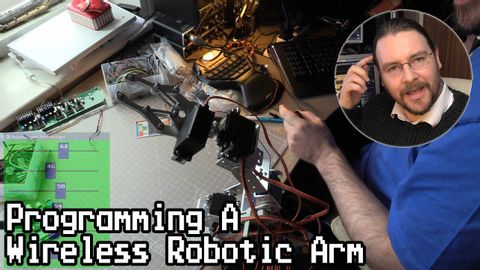為無線機器人手臂編程 (Programming a Wireless Robotic Arm)
 沒有此條件下的單字
沒有此條件下的單字- v.t.裝出;假裝;以為;(想當然地)認為;承擔;就任
US /ˈpɪriəd/
・
UK /ˈpɪəriəd/
- n. (c./u.)時期;(用於句末;表示斷定的口氣)就這樣;句號;月經;期間
US /ˈɪnstəns/
・
UK /'ɪnstəns/
- n. (c./u.)例證;實例;事件;實例 (電腦)
- v.t.例
- phr.應…的要求
US /pəˈzɪʃən/
・
UK /pəˈzɪʃn/
- n. (c./u.)態度,觀點;位置;(團隊運動中個人所處的)位置;職位;處境;優勢
- v.t.定位;放置

